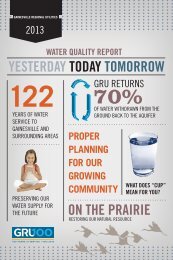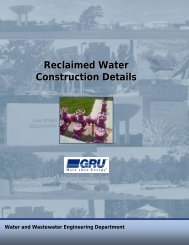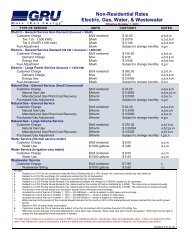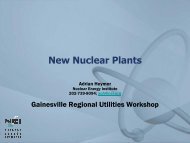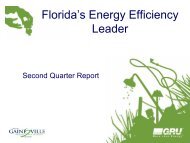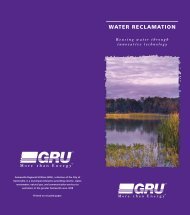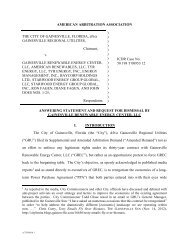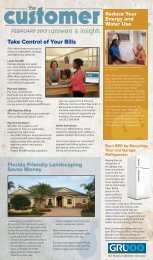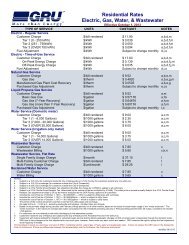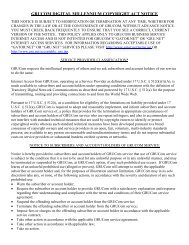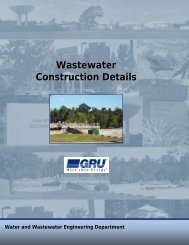Biomass Resource Assessment Part I - Gainesville Regional Utilities
Biomass Resource Assessment Part I - Gainesville Regional Utilities
Biomass Resource Assessment Part I - Gainesville Regional Utilities
Create successful ePaper yourself
Turn your PDF publications into a flip-book with our unique Google optimized e-Paper software.
Task-3: Transportation. Transportation options for biomass delivery will influence totaldelivered costs of biomass feedstocks. Intermodal freight options may be designed to alleviatetraffic and potentially to store off-site biomass supplies at satellite receiving points. We willassess the potential effects of intermodal freight moves on resource quantity and cost. Scenarioswill include biomass a) delivered to remote site by truck, processed at site, and transported toDeerhaven by truck; b) delivered to remote site by truck, processed, and transported toDeerhaven by rail; and c) trucked to Deerhaven, processed and used. We will tabulate ourassumptions so GRU can conduct a separate analysis to include local rail freight costs.Task-4: CO 2 emissions from harvest, process, and transportation of woody biomass.The combustion of sustainably produced biomass is CO 2 neutral, because biomass burned isequal to the amount of biomass regrown over time. However, the overall use of biomass forenergy is not CO 2 neutral because, as with conventional energy, fossil fuel is used in theproduction of the feedstock. Research to date generally suggests that net energy ratios, and thusCO 2 intensity, of biomass is competitive with other energy sources. We will a) conduct aliterature review to assess the CO 2 intensity of the production of biomass for energy, and b)estimate CO 2 emissions that would be generated from the production, harvest, processing, andtransportation of urban wood waste, logging residues, and forest products. Given this is a shorttermproject, this study will not include field measurements or a full life cycle analysis, but ratherwill make calculations based on available literature and familiarity with fuel (diesel) use inbiomass production and delivery operations.1.3. Organization of the Report<strong>Part</strong> I of this report is divided into seven main chapters. Chapter 1 presents the introductionand background to this study. Chapters 2 through 5 are dedicated to Tasks 1 through 4,respectively. Chapter 2 presents the background, methods, scenarios, and results for Task 1:Woodshed delineation and supply/market analysis for GRU, JEA, and TAL. This chapterpresents results of the base case scenarios, which are expanded on in subsequent chapters. Forexample, Chapter 3 is dedicated to Task 2: Sustainability impacts from land-use change, whichextends the methodology and results from Chapter 2 to make future projections. Similarly,Chapter 4 expands the analysis to focus on Task 3: Transportation impacts for Deerhaven.Chapter 5 is a review of literature to evaluate Task 4: CO 2 emissions from the harvest, process,11



